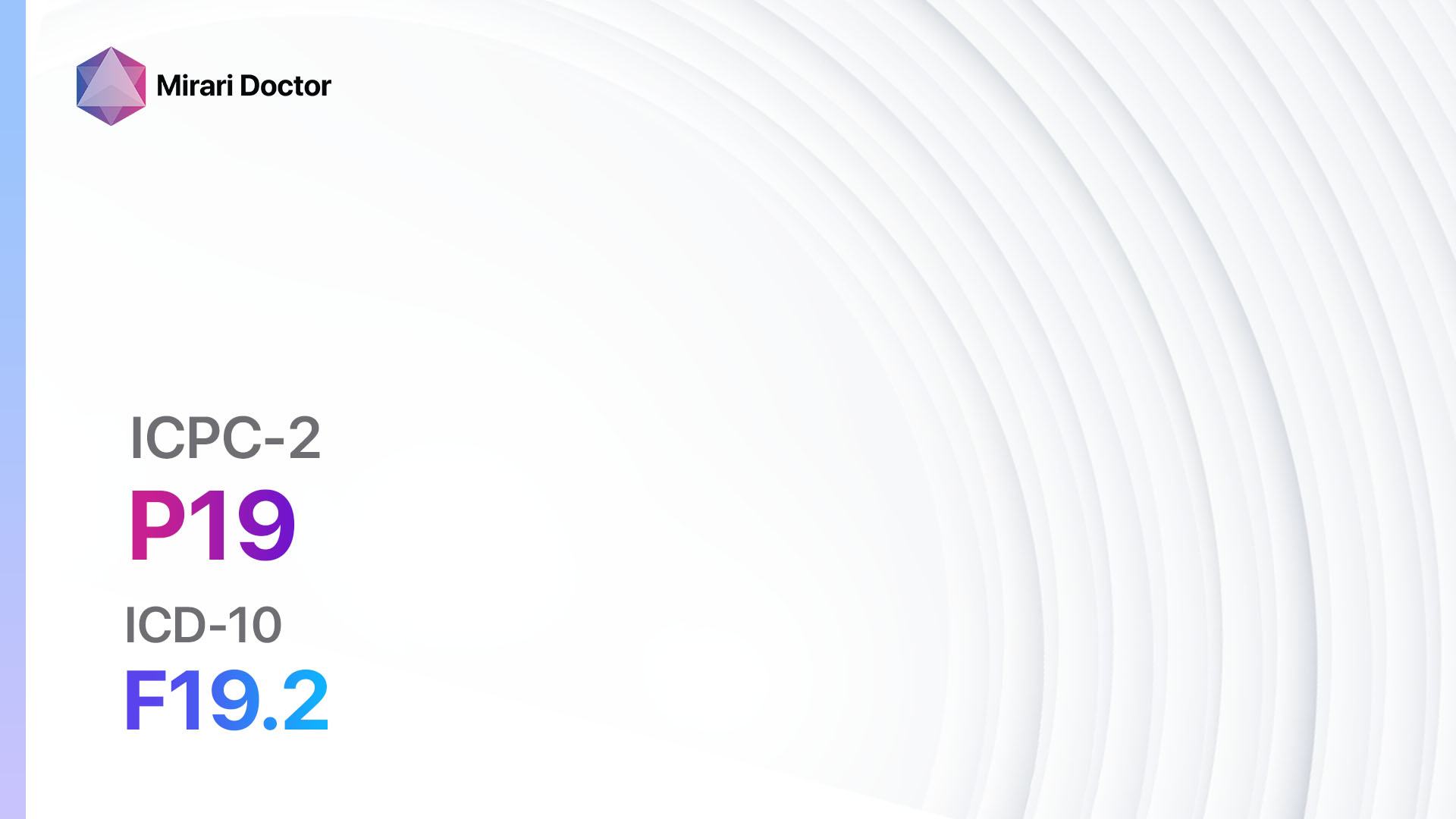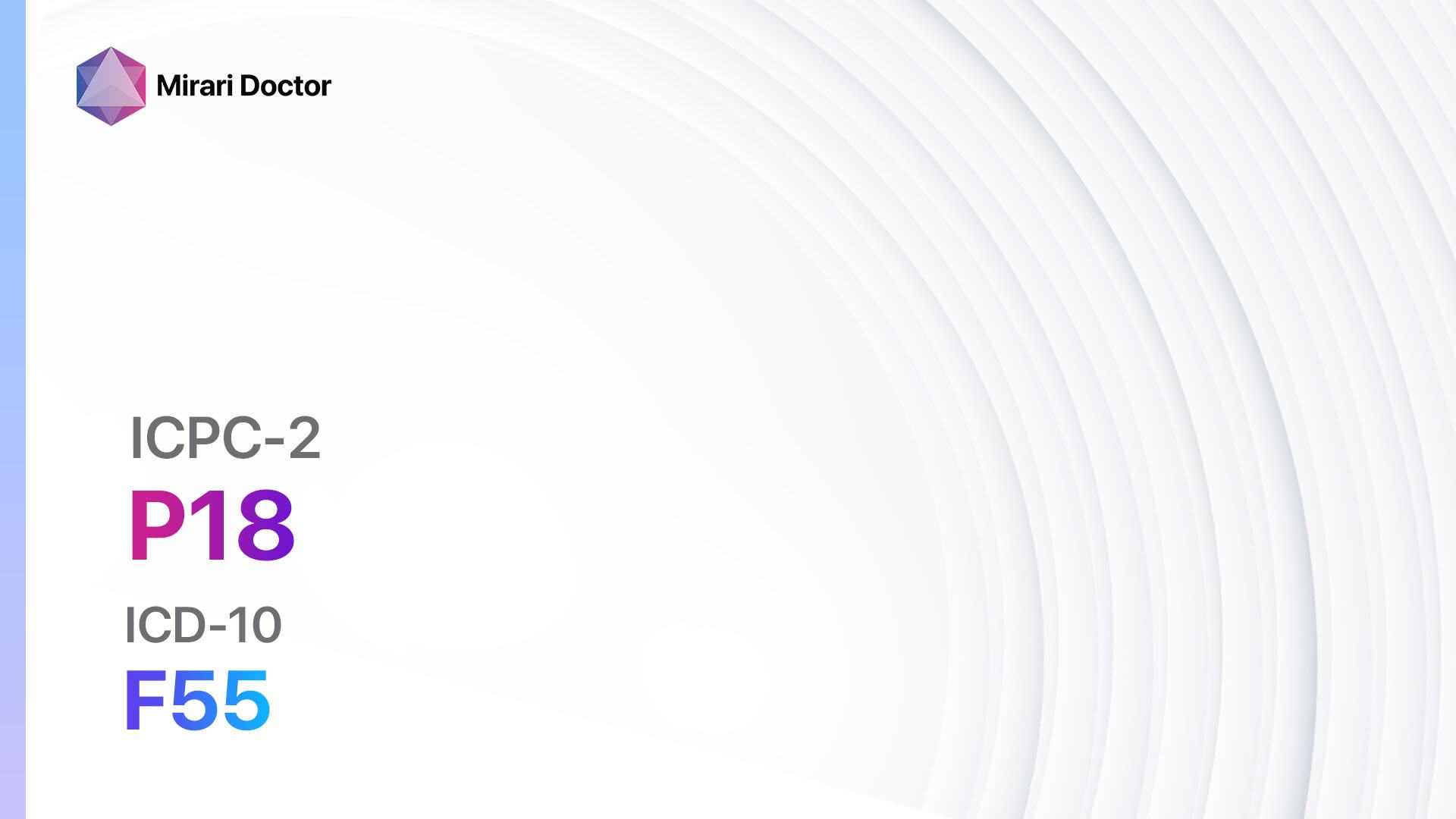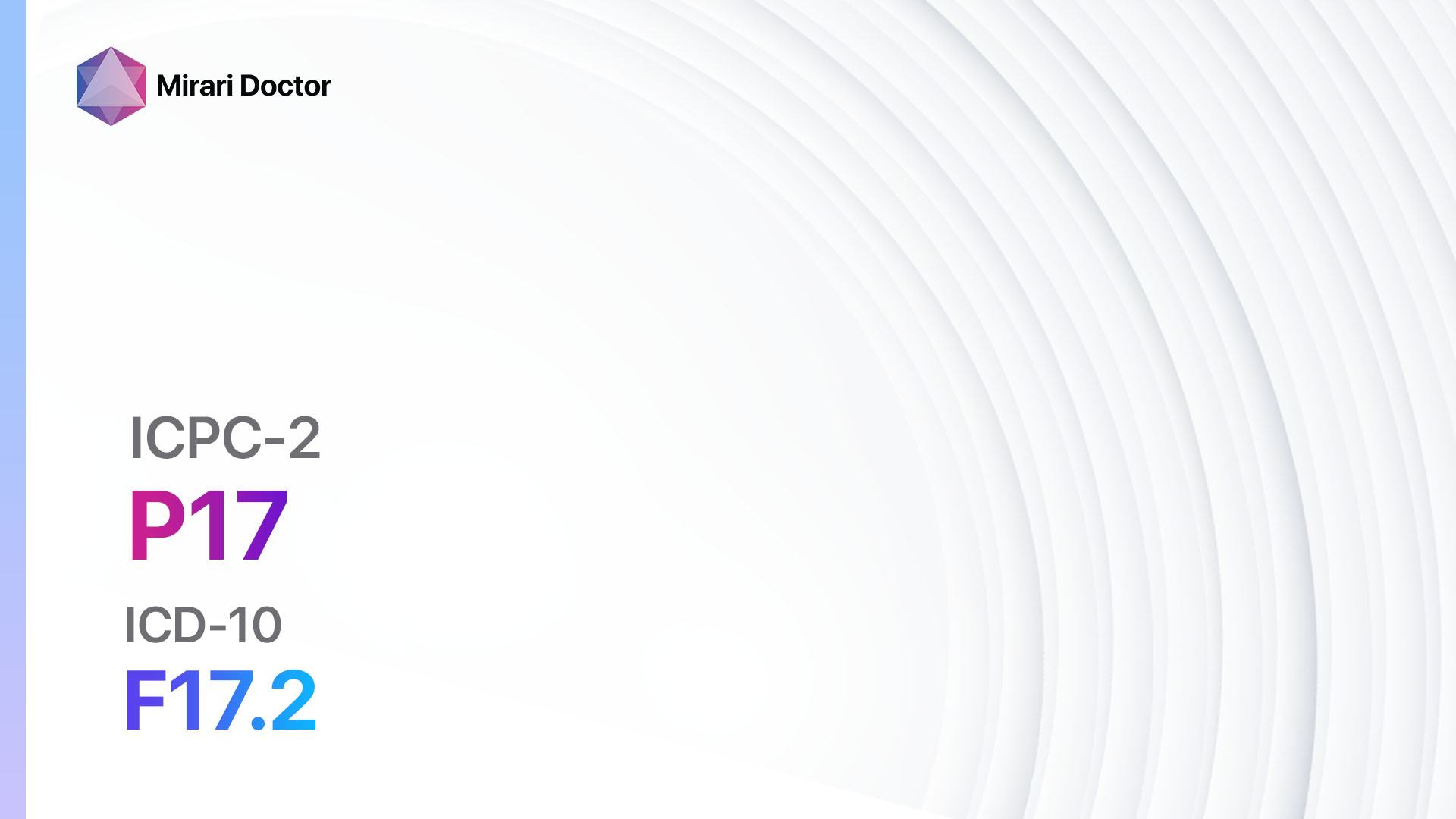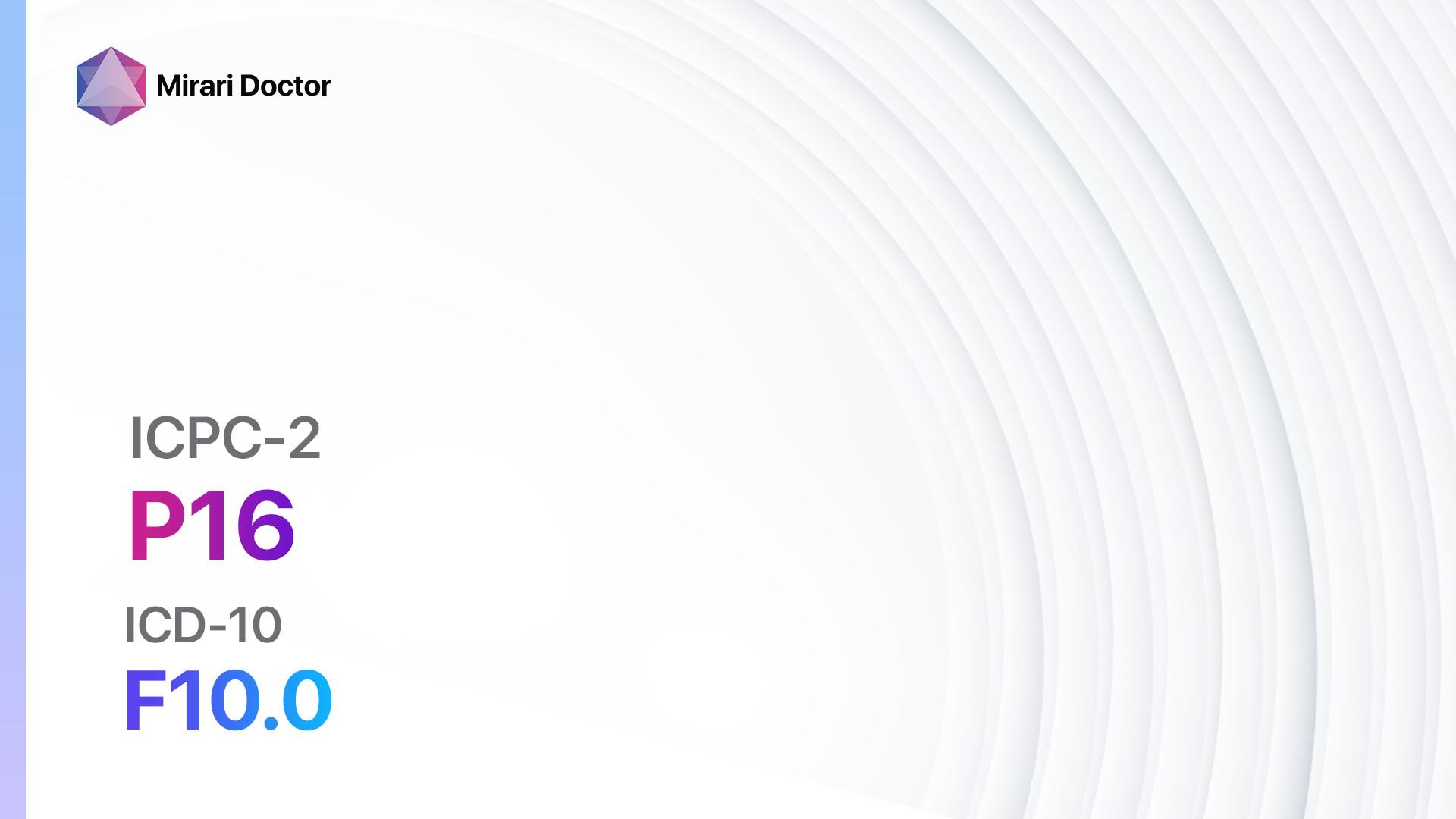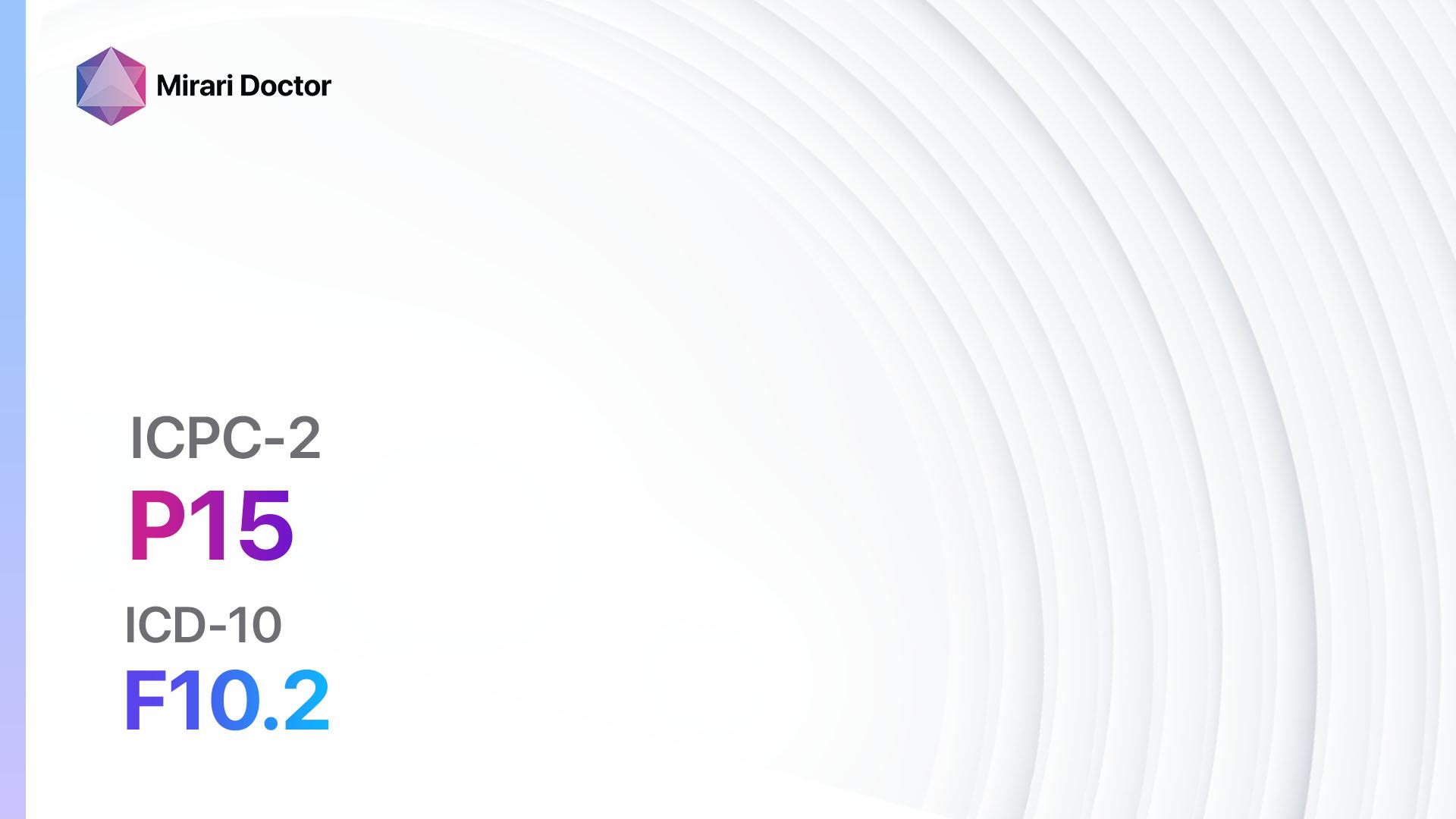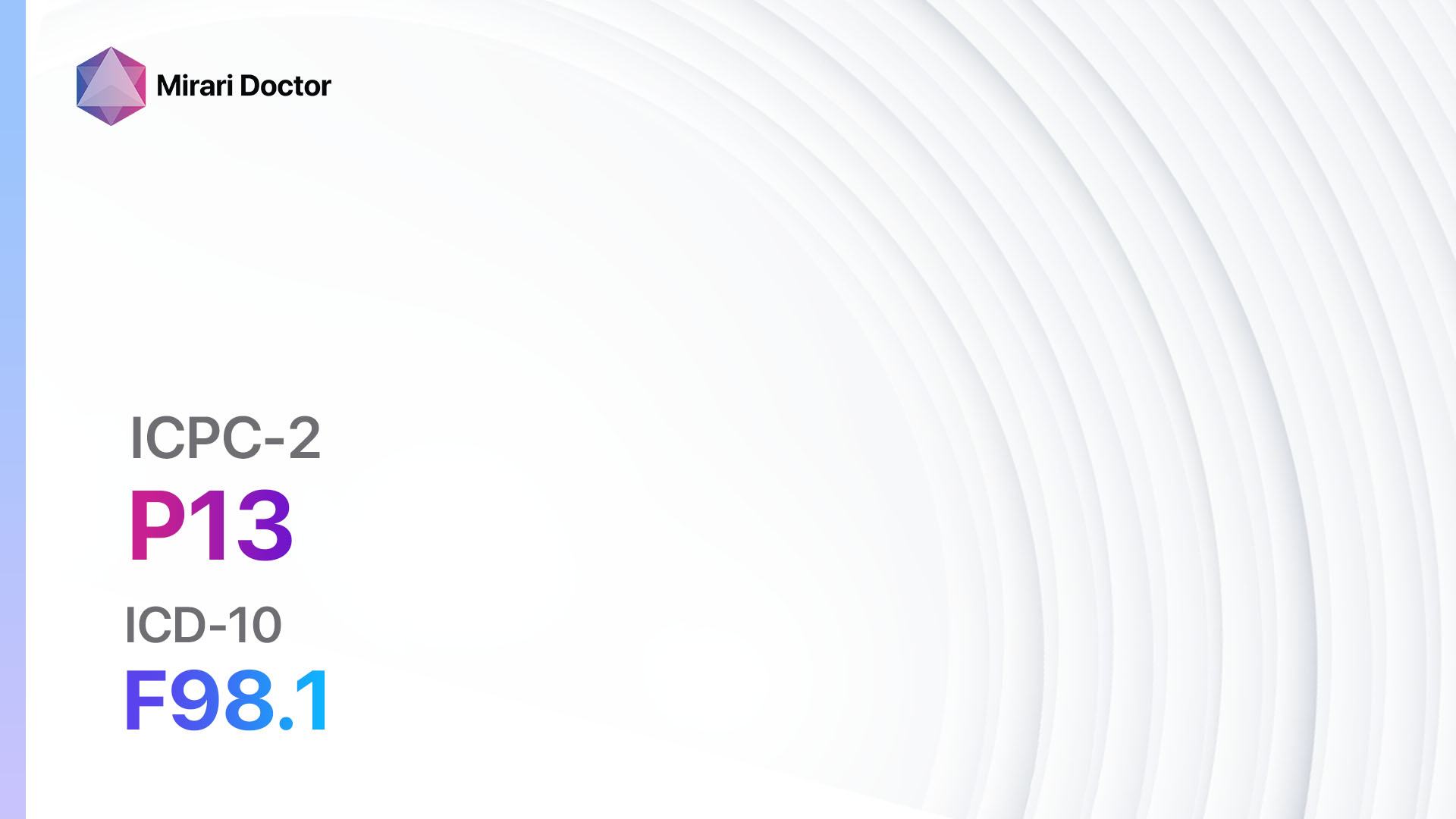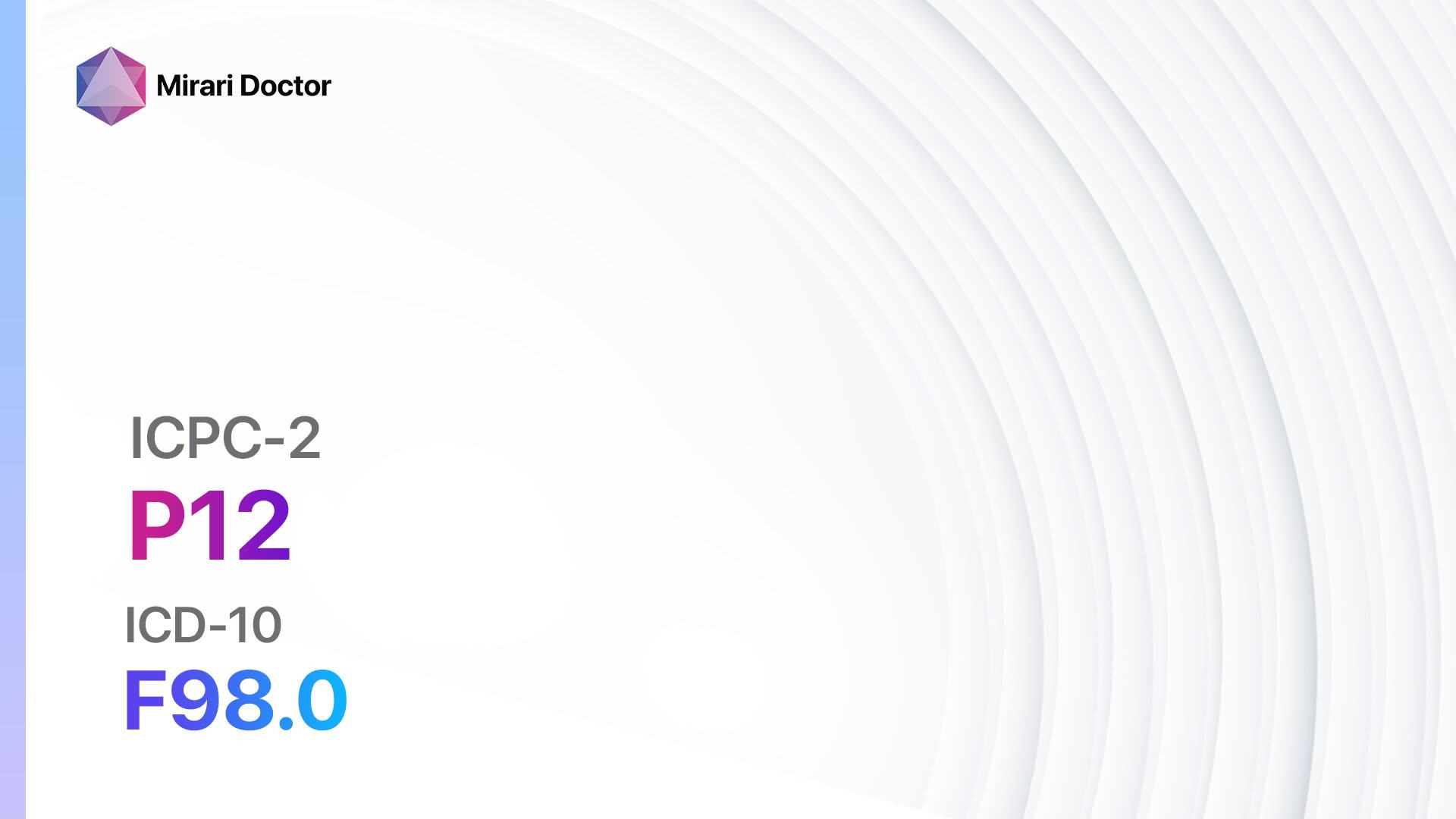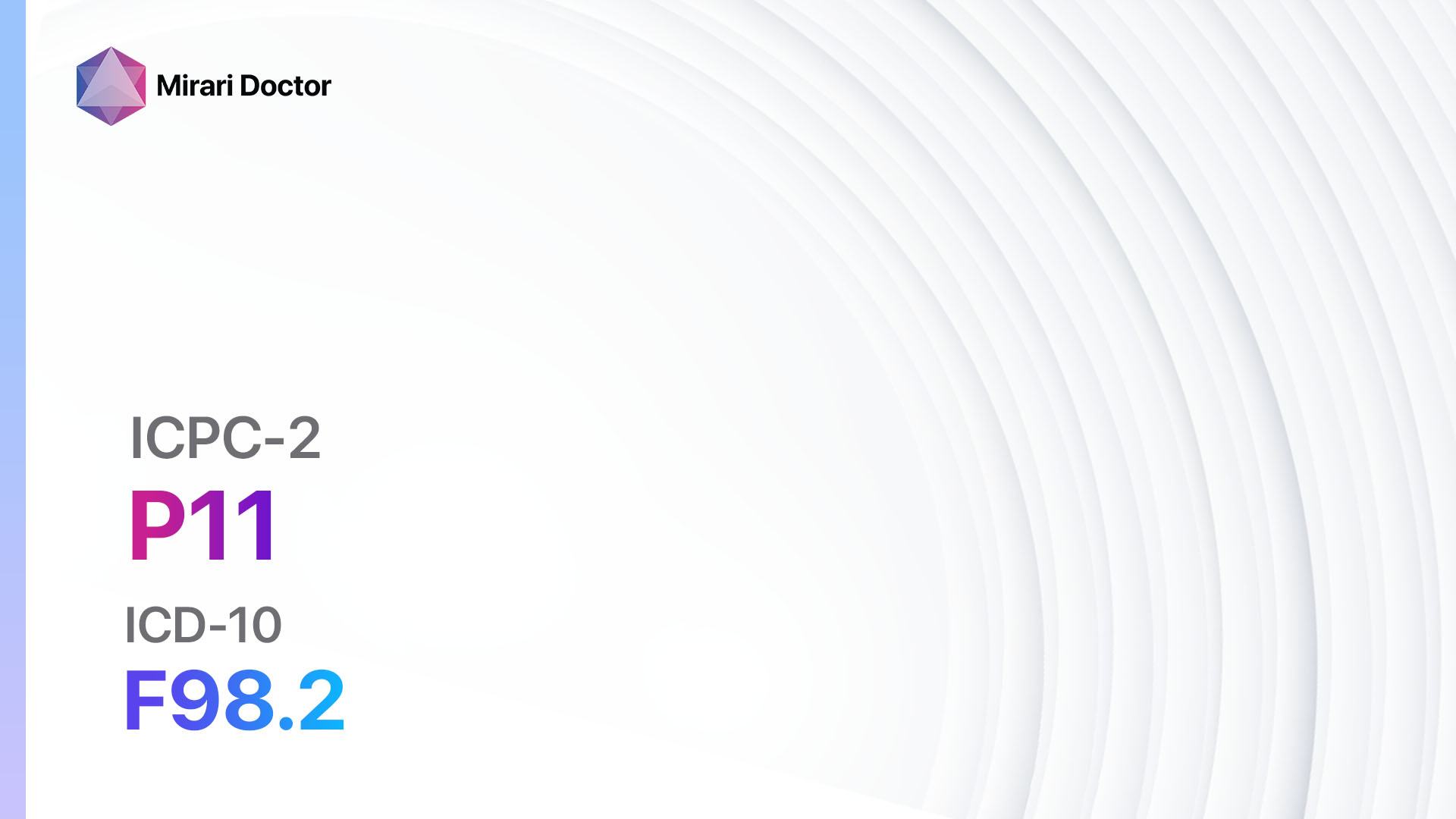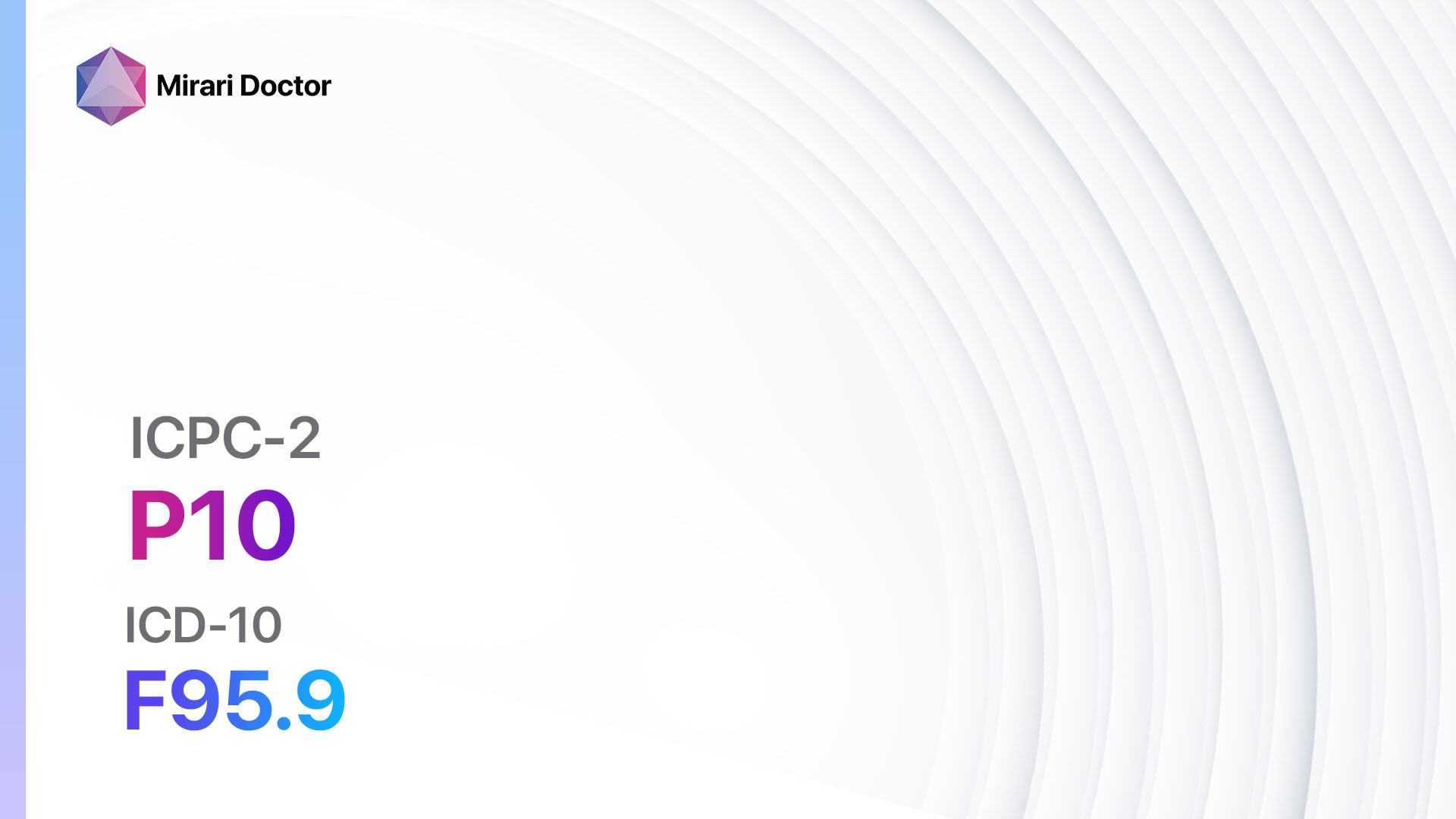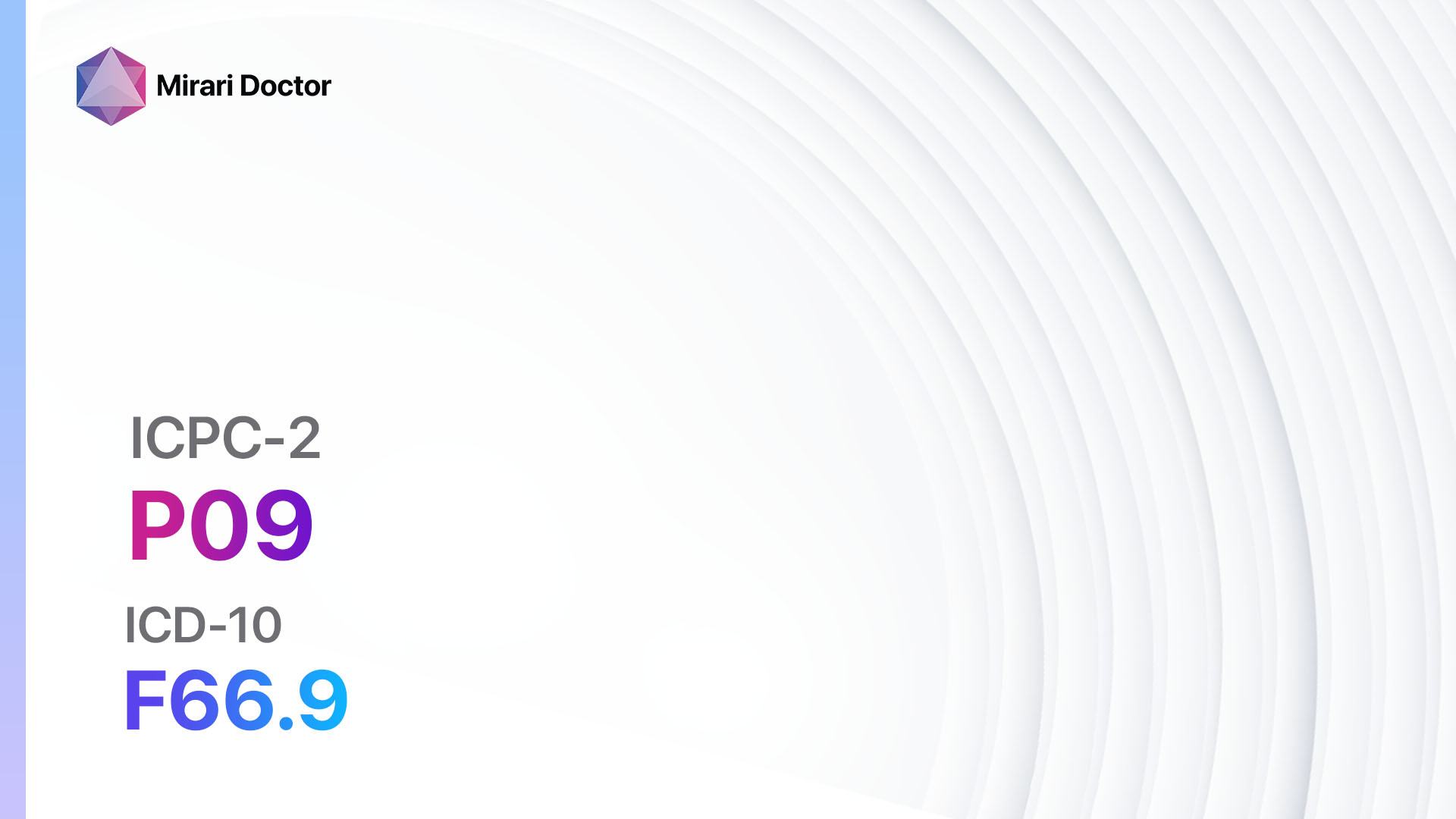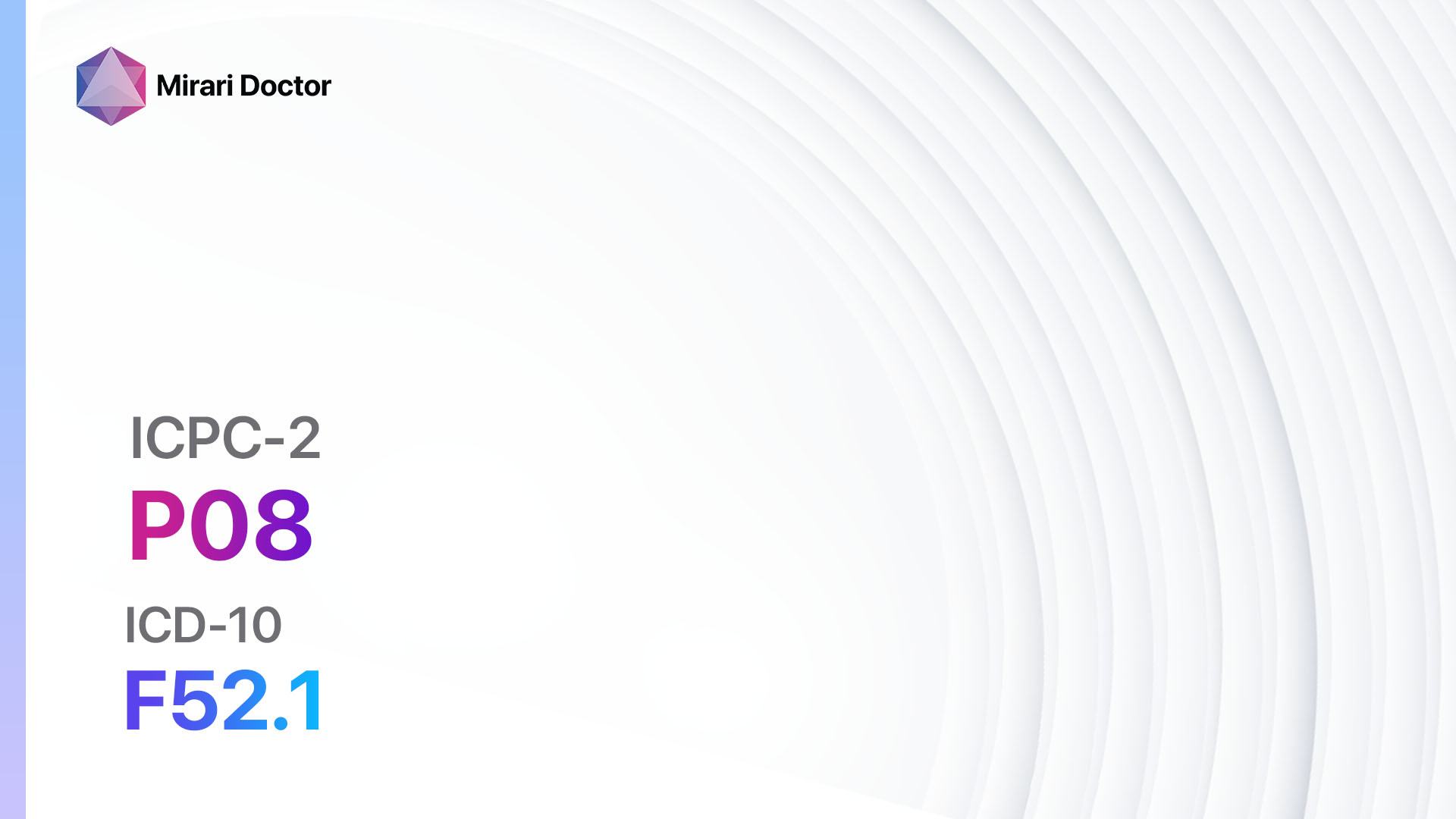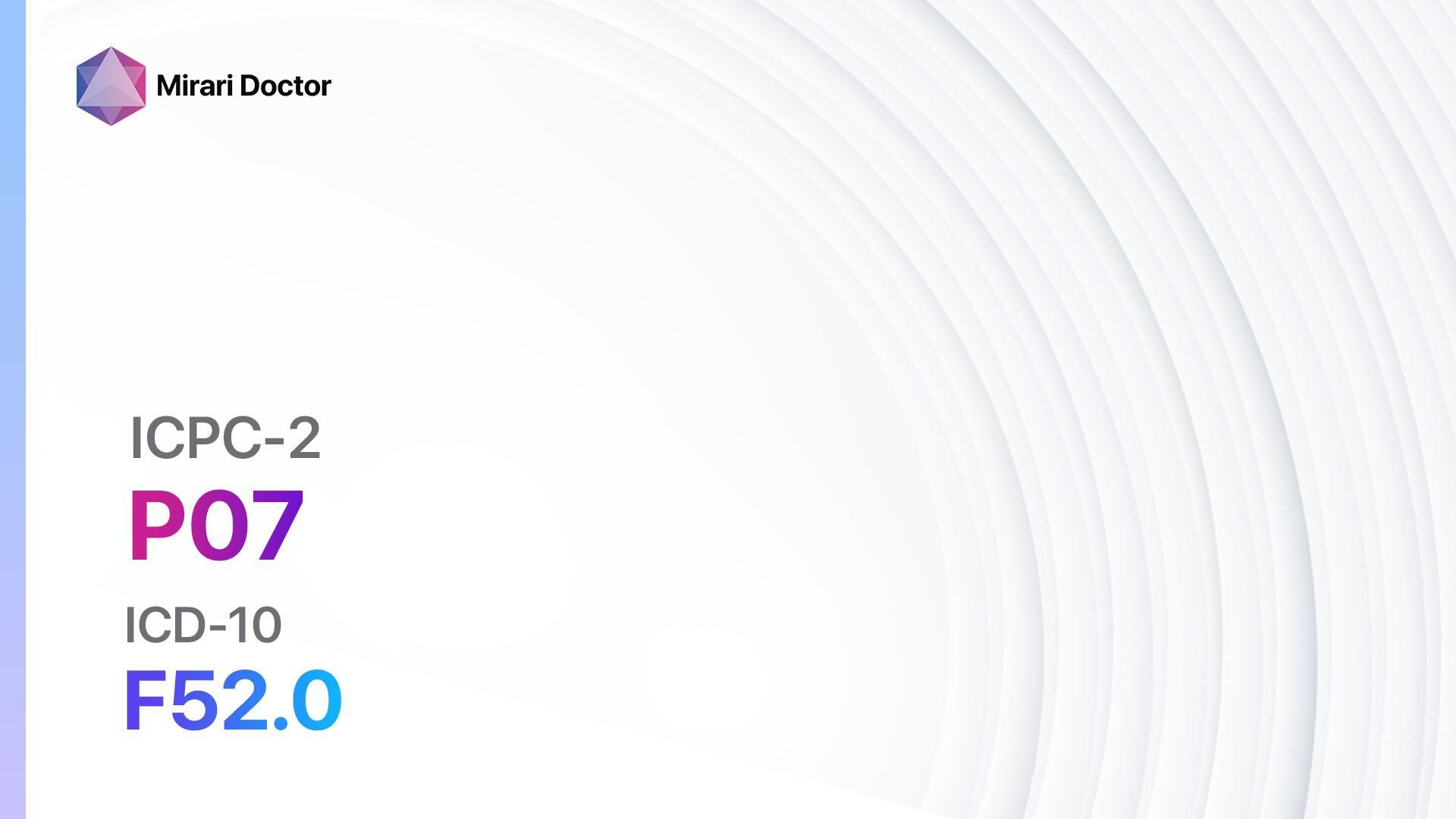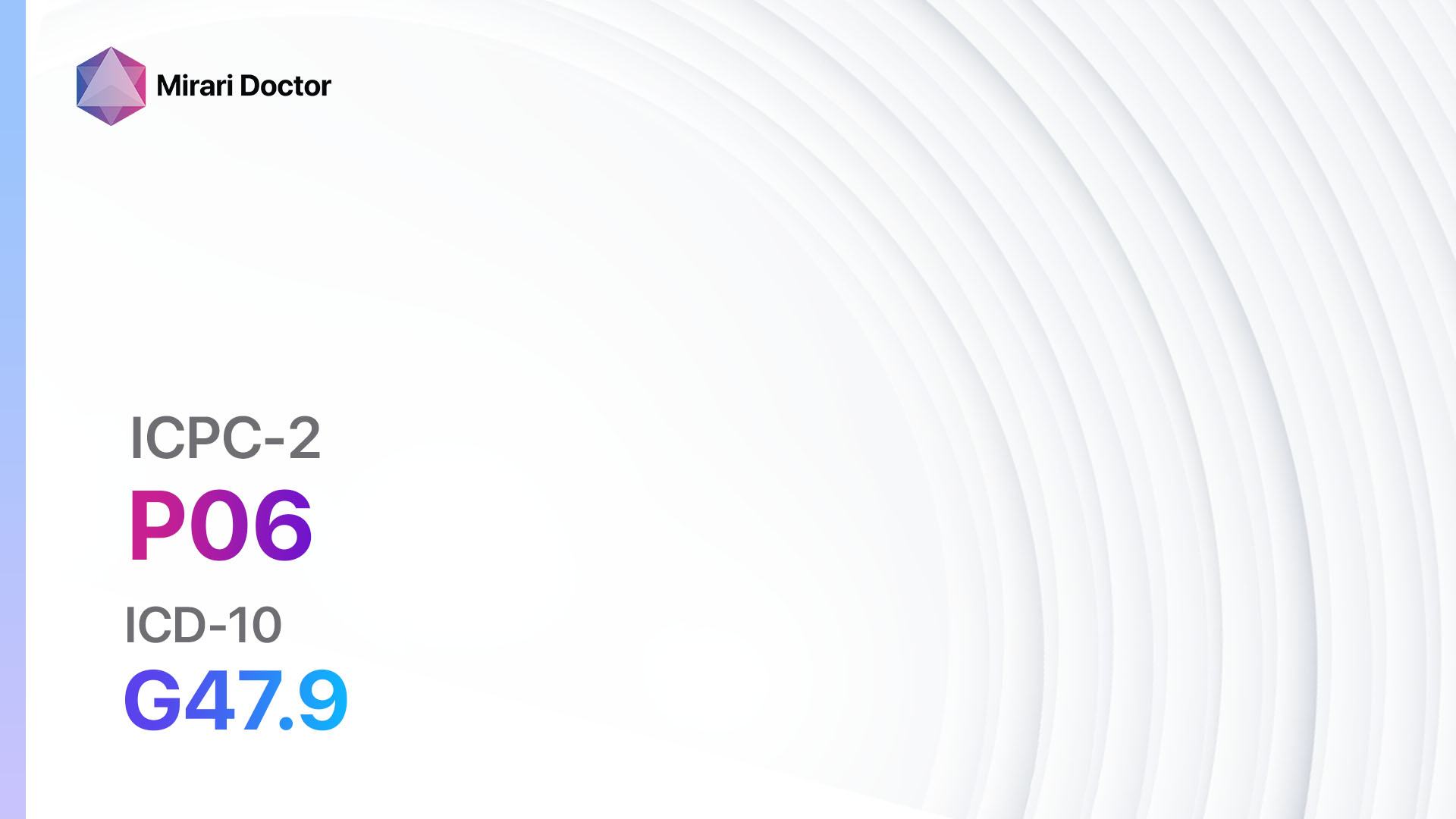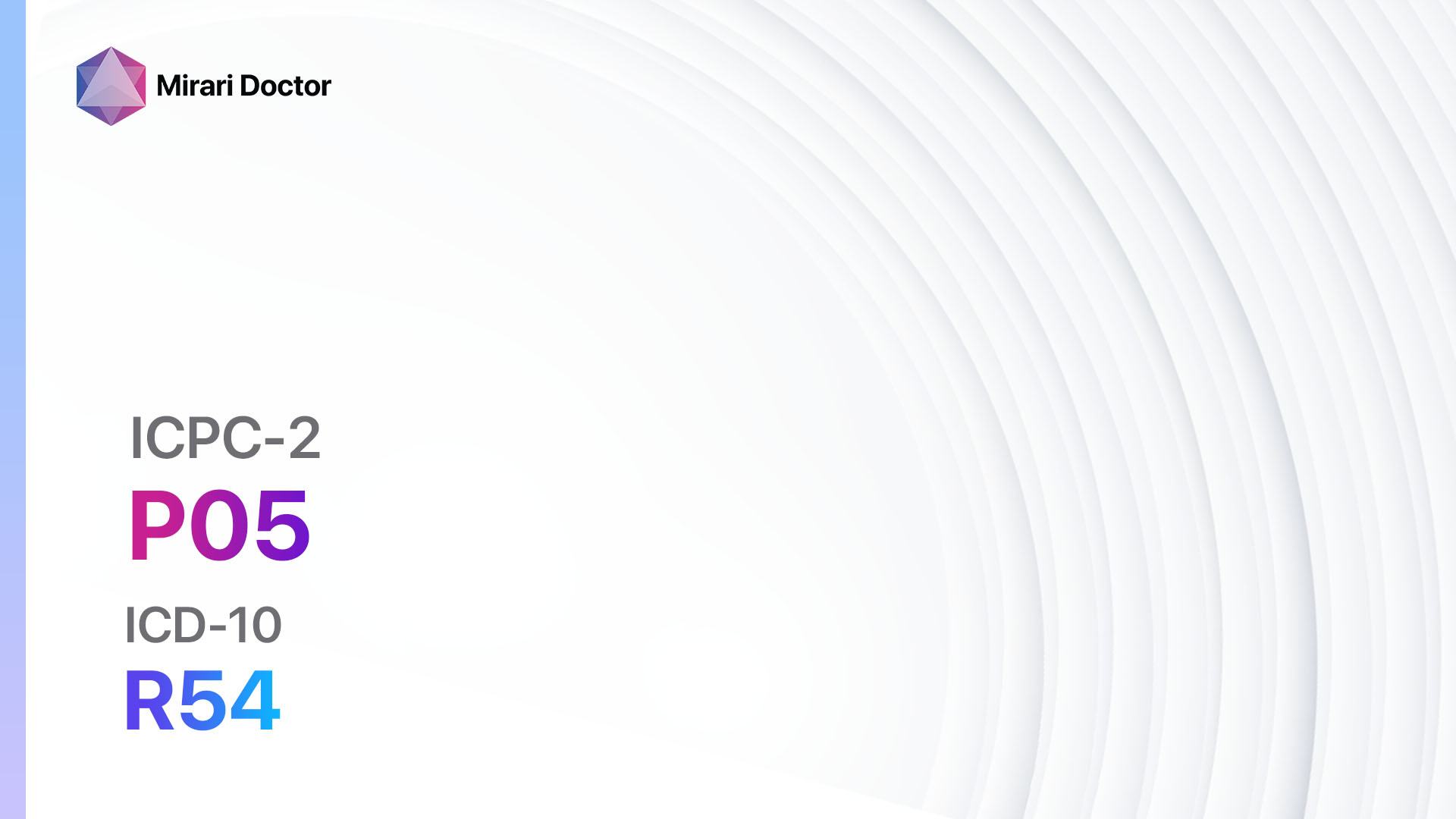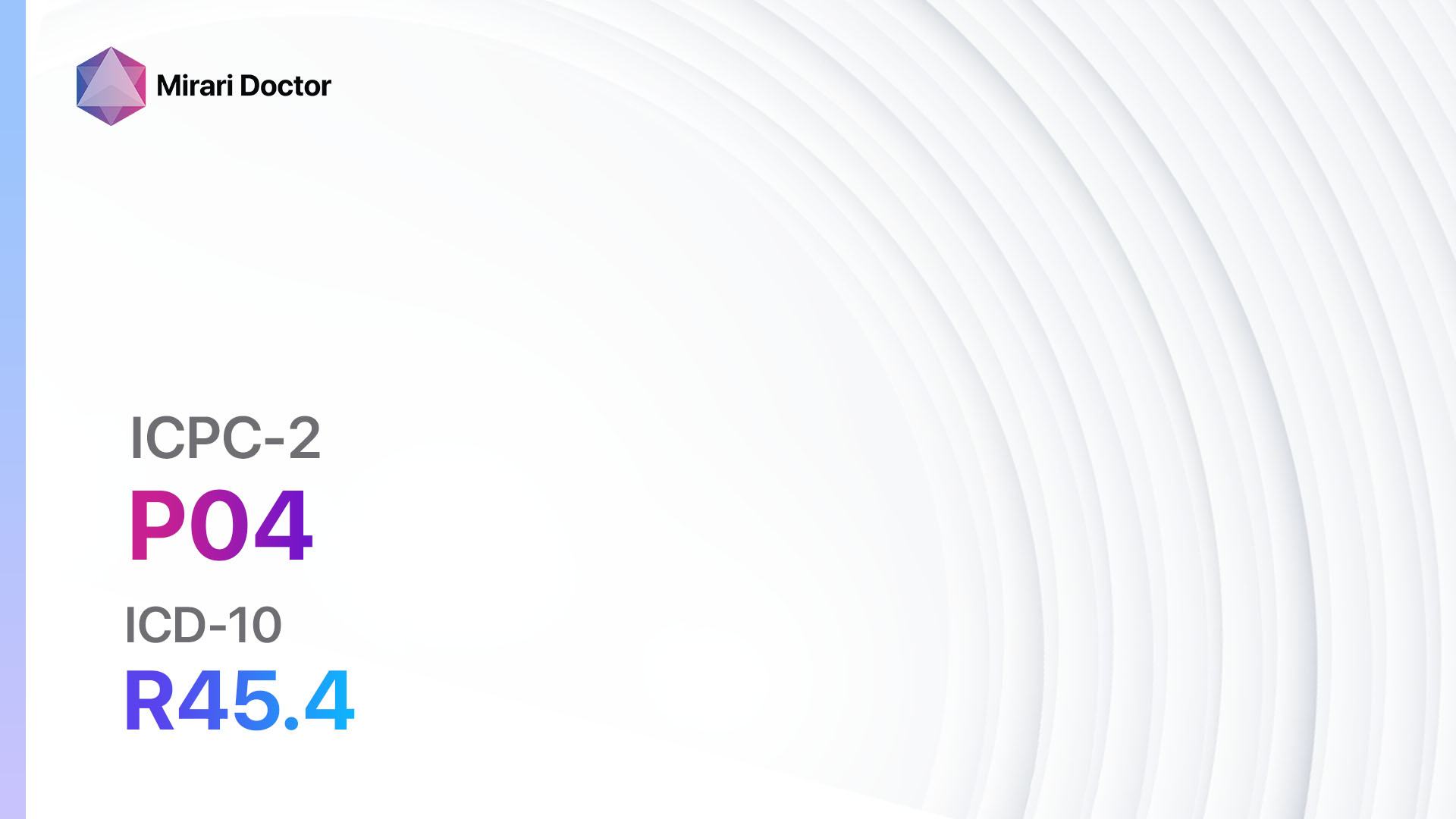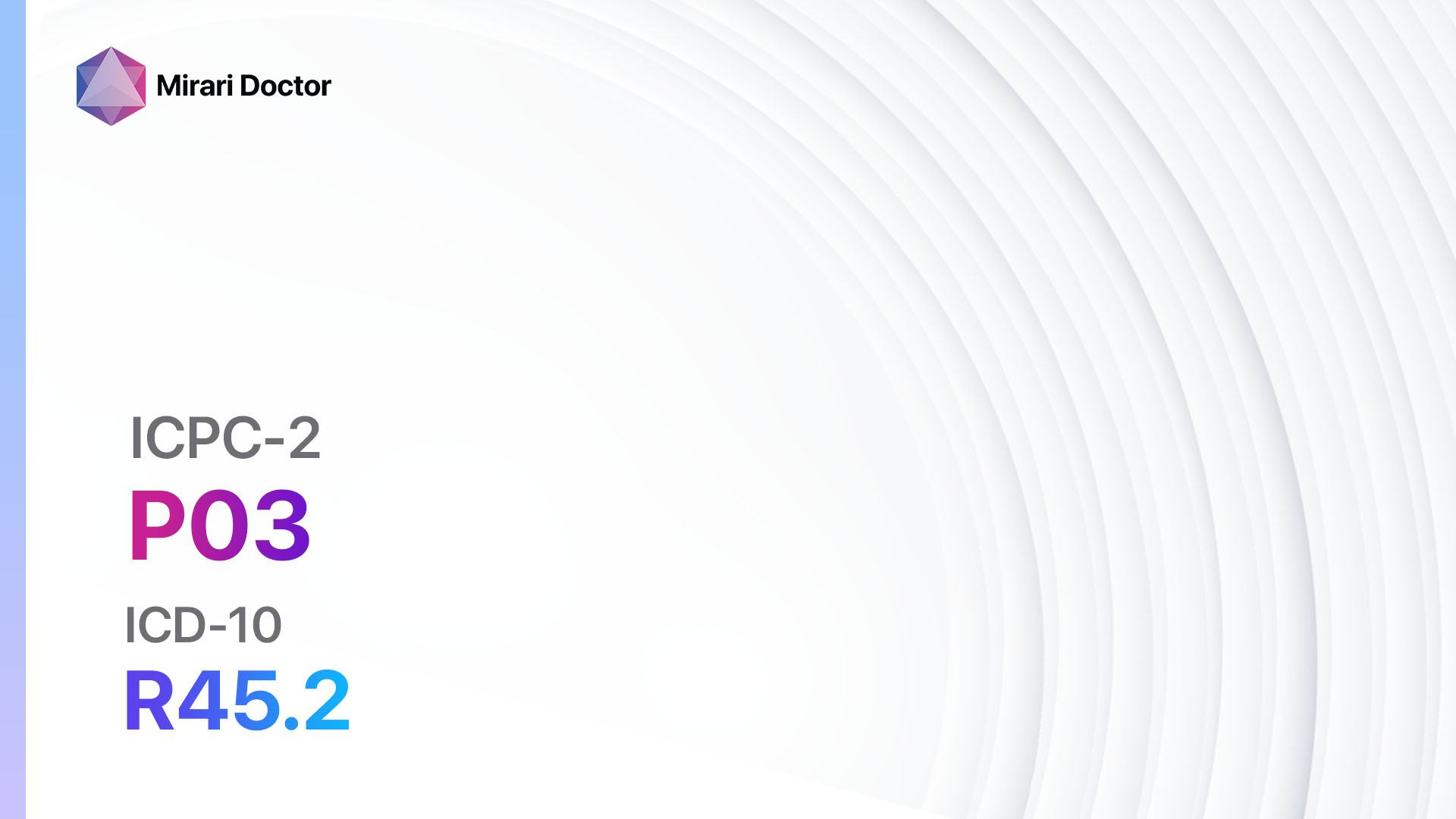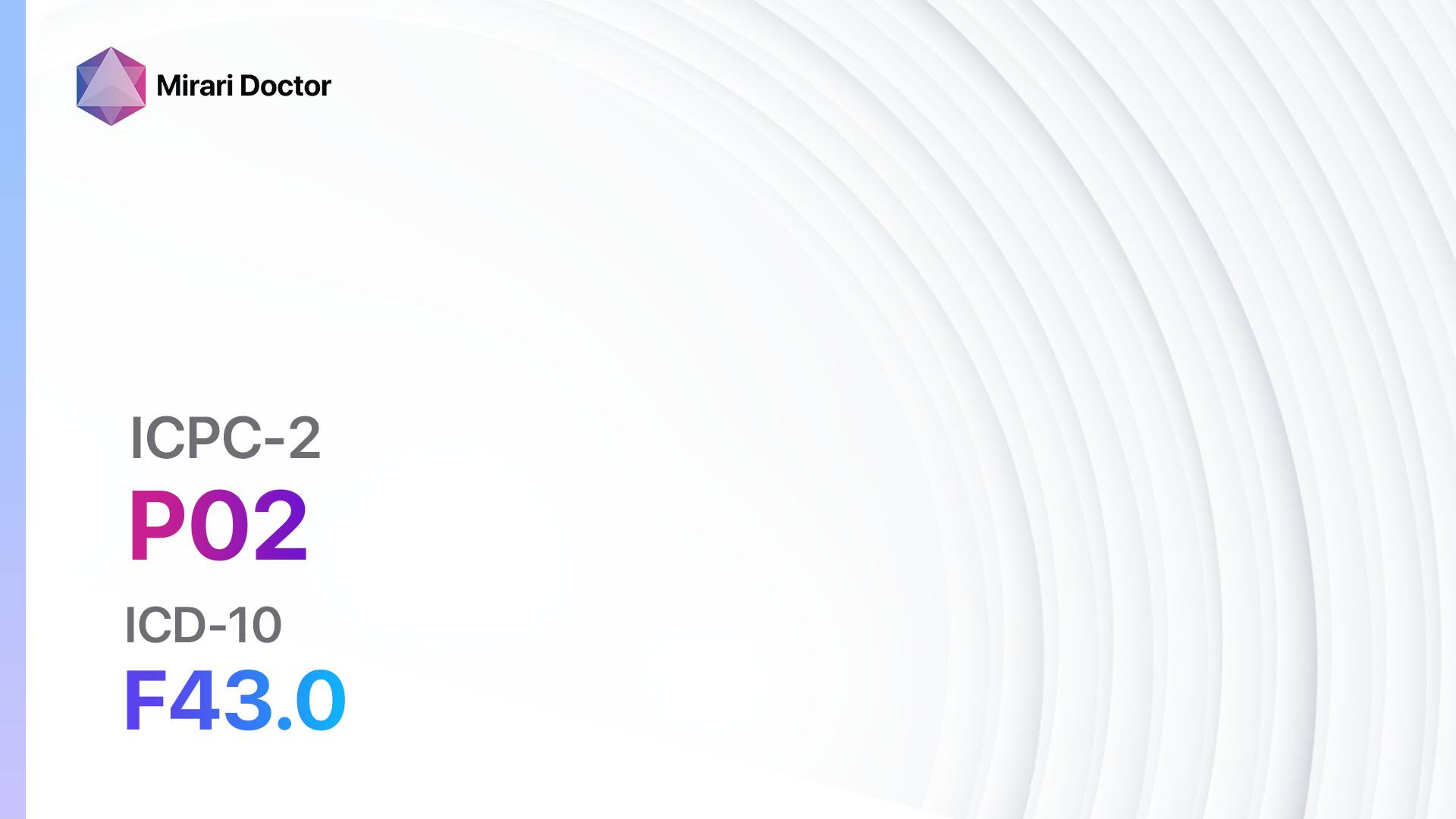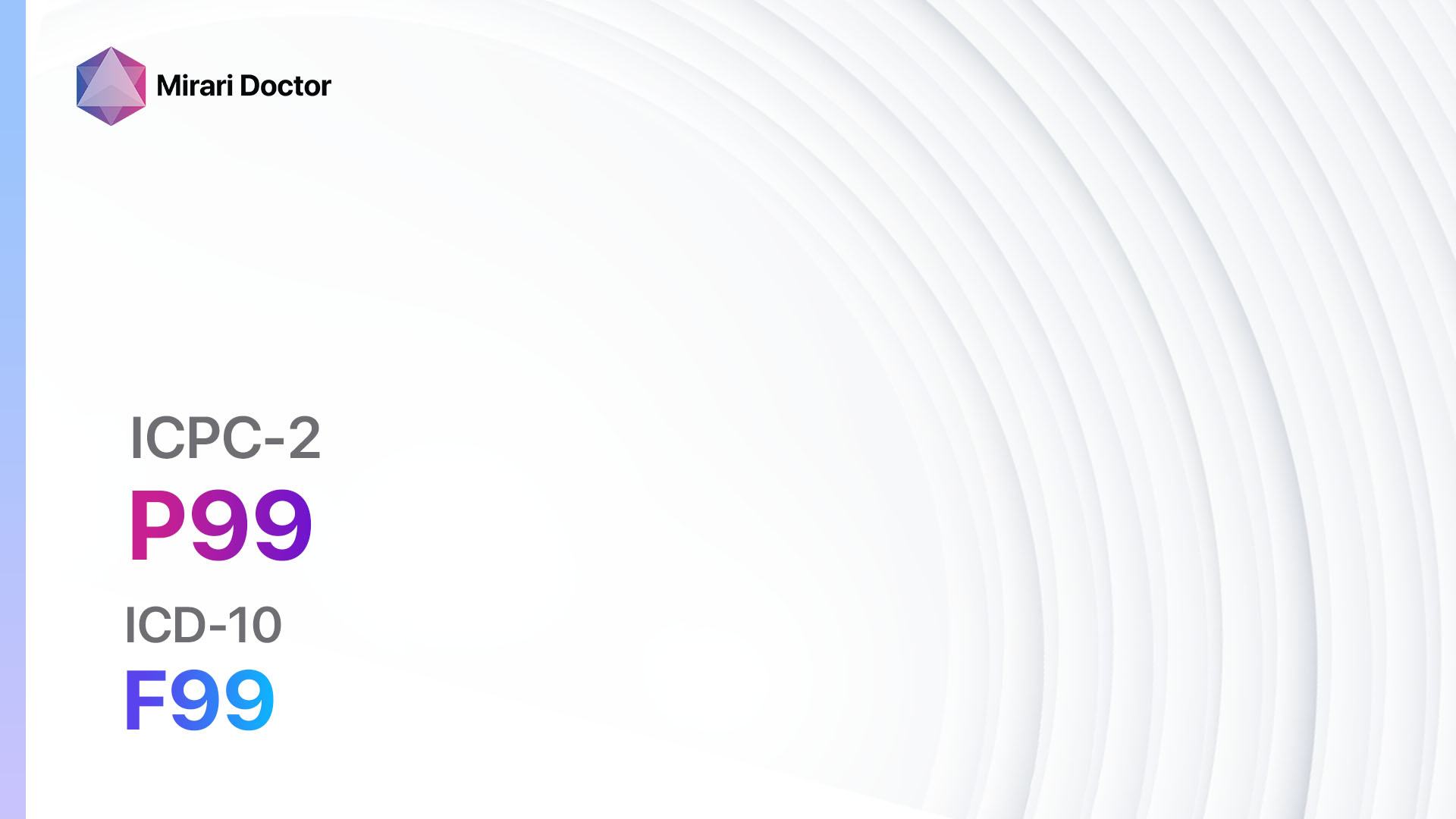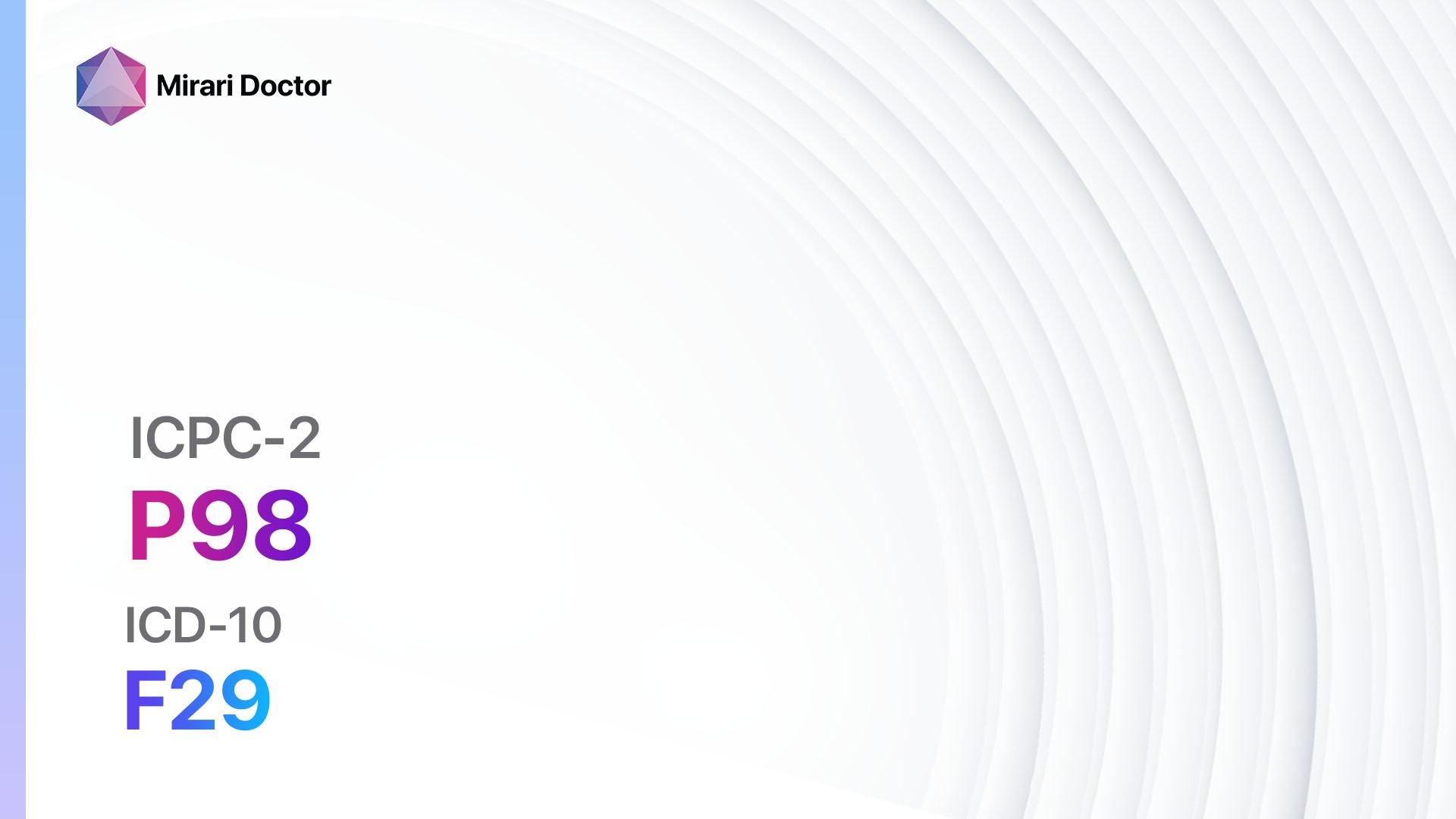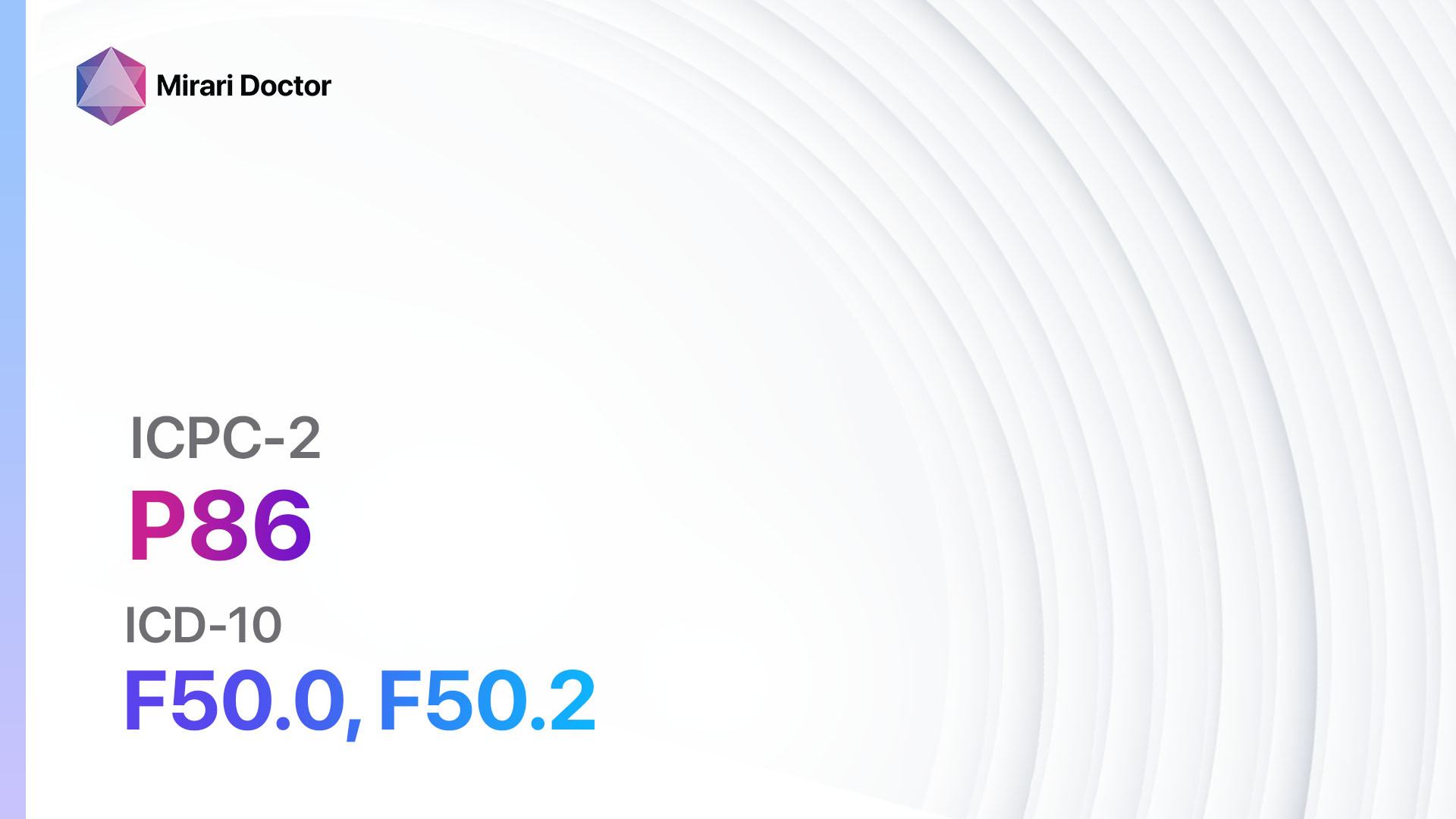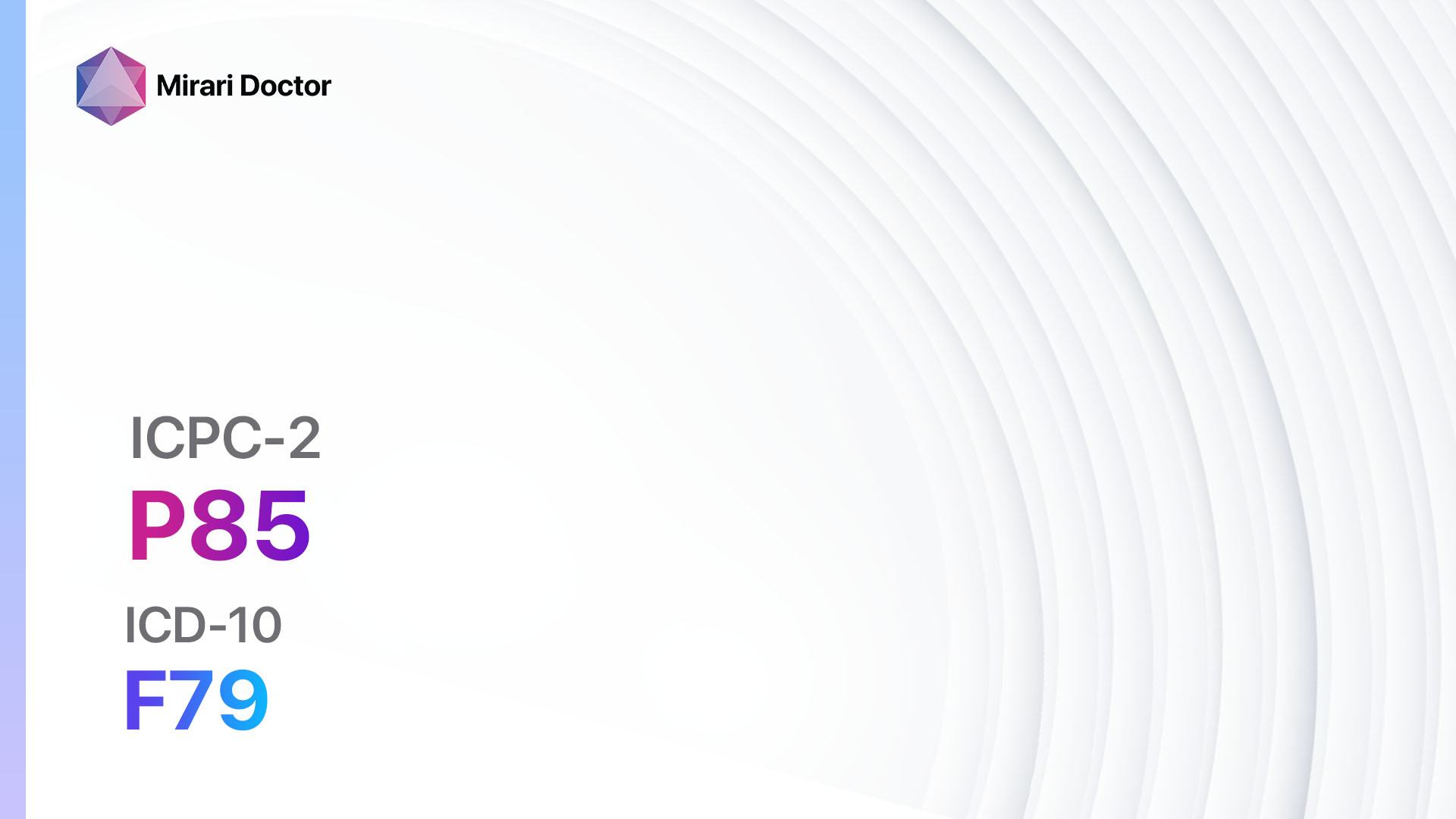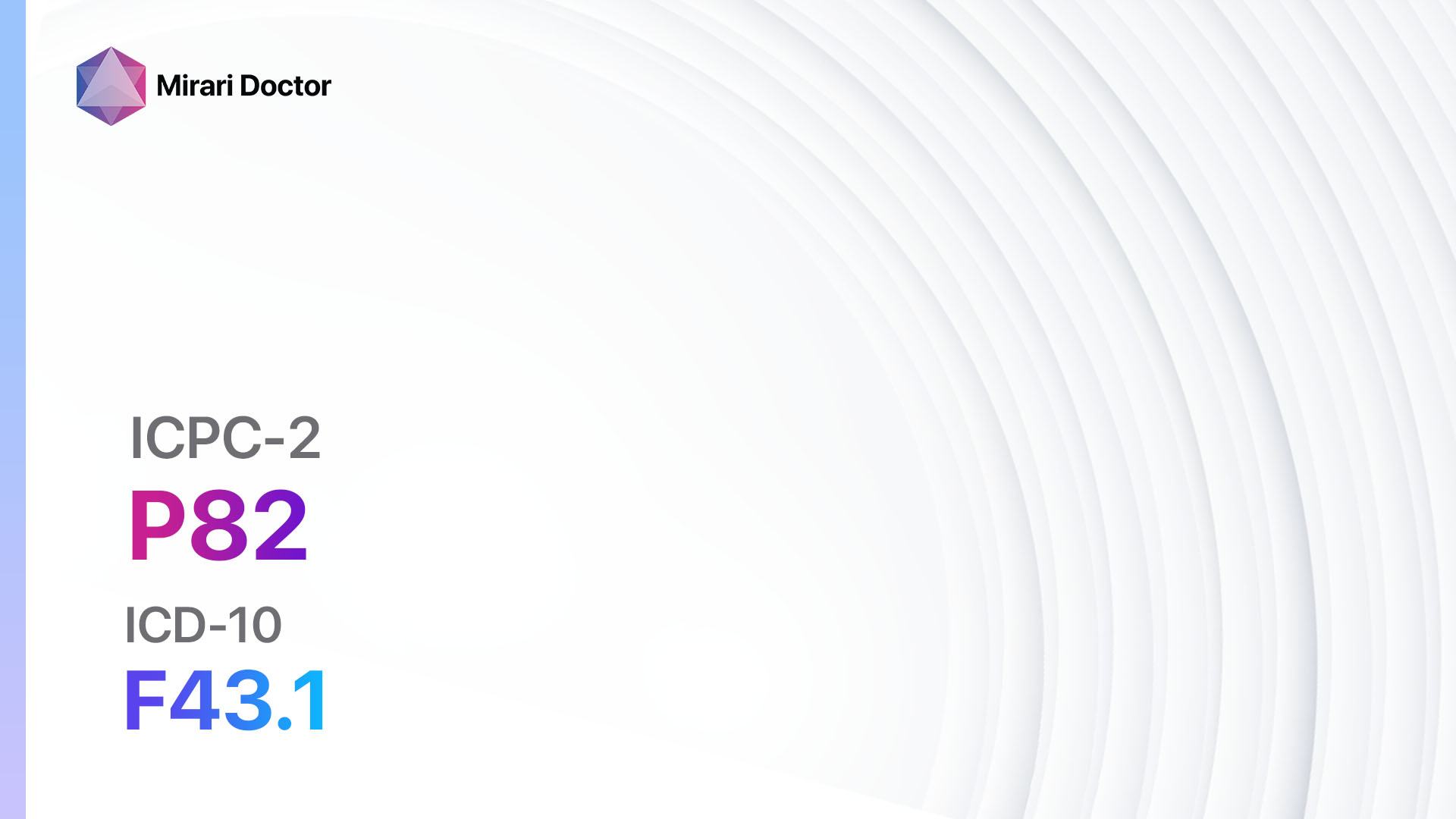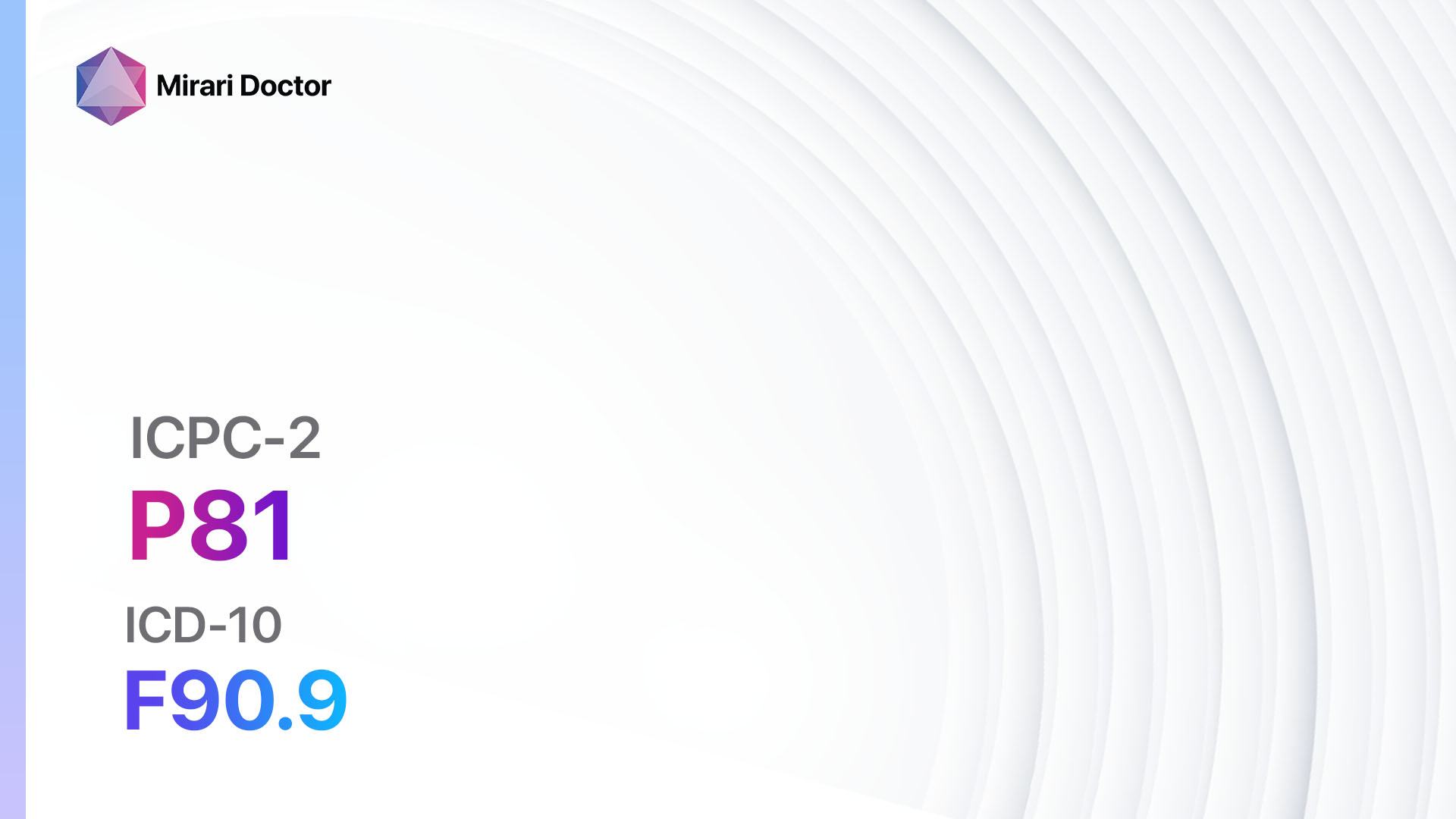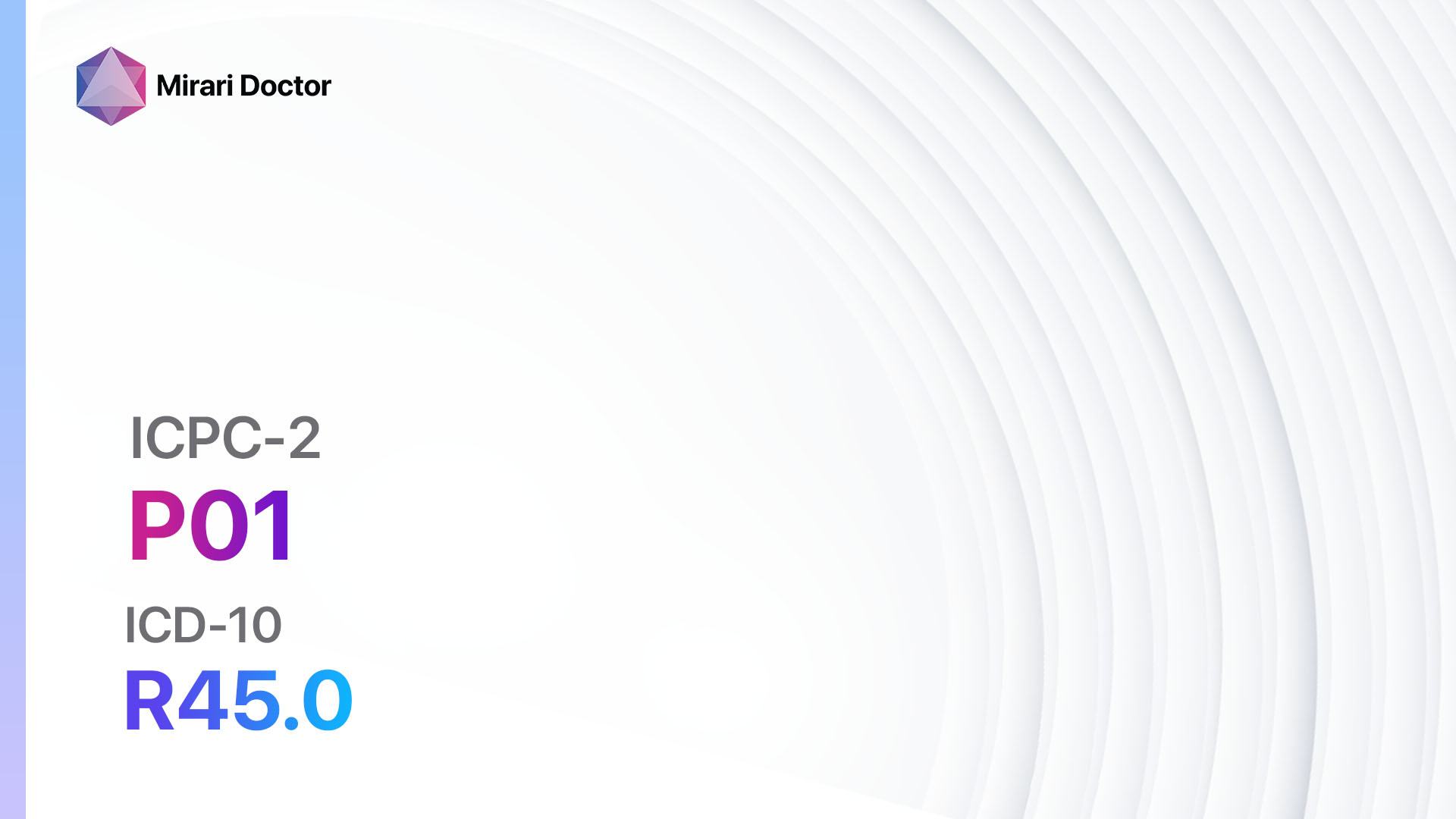
Introduction
Feeling anxious, nervous, or tense is a common symptom that many individuals experience at some point in their lives. While occasional anxiety is normal, persistent or severe anxiety can significantly impact a person’s quality of life.[1] This guide aims to provide healthcare professionals with a comprehensive approach to diagnosing and managing patients with feelings of anxiety, nervousness, or tension.
Codes
Symptoms
- Restlessness: Patients may report feeling restless or on edge.[2]
- Excessive worry: Patients may have persistent and excessive worry about various aspects of their life.[3]
- Fatigue: Patients may experience fatigue or a lack of energy.[4]
- Difficulty concentrating: Patients may have difficulty concentrating or their mind may go blank.[5]
- Irritability: Patients may feel irritable or have a short temper.[6]
- Muscle tension: Patients may experience muscle tension or muscle aches.[7]
- Sleep disturbances: Patients may have difficulty falling asleep, staying asleep, or have restless, unsatisfying sleep.[8]
Causes
- Stressful life events: Significant life events such as job loss, relationship problems, or financial difficulties can contribute to feelings of anxiety.[9]
- Trauma: Past traumatic experiences can lead to anxiety symptoms.[10]
- Genetics: There may be a genetic predisposition to anxiety disorders.
- Medical conditions: Certain medical conditions such as thyroid disorders or heart conditions can cause anxiety symptoms.
- Substance abuse: The use of drugs or alcohol can contribute to feelings of anxiety.
- Medications: Some medications, such as certain antidepressants or stimulants, can cause anxiety symptoms.
Diagnostic Steps
Medical History
- Gather information about the patient’s personal and family medical history, including any history of anxiety disorders or other mental health conditions.
- Ask about recent stressful life events or traumatic experiences.
- Inquire about the use of medications or substances that may contribute to anxiety symptoms.
- Assess for any underlying medical conditions that may be causing or exacerbating anxiety symptoms.
Physical Examination
- Perform a thorough physical examination to rule out any underlying medical conditions that may be contributing to anxiety symptoms.
- Look for signs of hyperarousal, such as increased heart rate or blood pressure.
- Assess for any physical symptoms of anxiety, such as muscle tension or restlessness.
Laboratory Tests
- Blood tests: Perform a complete blood count (CBC) to rule out any underlying medical conditions such as thyroid disorders or anemia.
- Urine drug screen: If substance abuse is suspected, a urine drug screen may be necessary to identify any substances that may be contributing to anxiety symptoms.
Diagnostic Imaging
- Diagnostic imaging is not typically necessary for the diagnosis of anxiety disorders. However, in cases where an underlying medical condition is suspected, imaging modalities such as CT scans or MRIs may be ordered to assess for any structural abnormalities.
Other Tests
- Psychological assessment: Consider referring the patient to a mental health professional for a comprehensive psychological assessment to evaluate for any underlying anxiety disorders or other mental health conditions.
Follow-up and Patient Education
- Schedule regular follow-up appointments to monitor the patient’s progress and adjust treatment as needed.
- Provide patient education materials on anxiety management techniques, stress reduction, and lifestyle modifications that may help alleviate symptoms.
Possible Interventions
Traditional Interventions
Medications:
Top 5 drugs for anxiety:
- Selective serotonin reuptake inhibitors (SSRIs) (e.g., Sertraline, Escitalopram):
- Cost: Generic versions can be $10-$50/month.
- Contraindications: Hypersensitivity to SSRIs, concurrent use of monoamine oxidase inhibitors (MAOIs).
- Side effects: Nausea, headache, sexual dysfunction.
- Severe side effects: Serotonin syndrome, suicidal thoughts.
- Drug interactions: MAOIs, other serotonergic medications.
- Warning: May increase the risk of suicidal thoughts in children and young adults.
- Benzodiazepines (e.g., Alprazolam, Diazepam):
- Cost: Generic versions can be $10-$30/month.
- Contraindications: Acute narrow-angle glaucoma, severe respiratory insufficiency.
- Side effects: Sedation, dizziness, confusion.
- Severe side effects: Respiratory depression, dependence.
- Drug interactions: Alcohol, opioids.
- Warning: High potential for abuse and dependence.
- Buspirone:
- Cost: Generic versions can be $10-$30/month.
- Contraindications: Hypersensitivity to buspirone.
- Side effects: Dizziness, headache, nausea.
- Severe side effects: Serotonin syndrome, allergic reactions.
- Drug interactions: MAOIs, grapefruit juice.
- Warning: Takes several weeks to reach full effect.
- Beta-blockers (e.g., Propranolol):
- Cost: Generic versions can be $10-$30/month.
- Contraindications: Severe bradycardia, heart block.
- Side effects: Fatigue, dizziness, bradycardia.
- Severe side effects: Bronchospasm, heart failure.
- Drug interactions: Calcium channel blockers, insulin.
- Warning: Should not be abruptly stopped.
- Antidepressants (e.g., Venlafaxine, Duloxetine):
- Cost: Generic versions can be $10-$50/month.
- Contraindications: Hypersensitivity to antidepressants, concurrent use of MAOIs.
- Side effects: Nausea, headache, sexual dysfunction.
- Severe side effects: Serotonin syndrome, suicidal thoughts.
- Drug interactions: MAOIs, other serotonergic medications.
- Warning: May increase the risk of suicidal thoughts in children and young adults.
Alternative Drugs:
- Hydroxyzine: An antihistamine with anxiolytic properties.
- Pregabalin: An anticonvulsant used for generalized anxiety disorder.
- Quetiapine: An atypical antipsychotic used for anxiety disorders.
- Gabapentin: An anticonvulsant used for anxiety disorders.
- Valproic acid: An anticonvulsant used for anxiety disorders.
Cognitive Behavioral Therapy (CBT):
- CBT is a type of psychotherapy that focuses on identifying and changing negative thought patterns and behaviors associated with anxiety.
- Cost: Varies depending on the therapist and location. Typically ranges from $100-$200 per session.
Relaxation Techniques:
- Deep breathing exercises: Teach patients deep breathing techniques to help reduce anxiety symptoms.
- Progressive muscle relaxation: Instruct patients on how to systematically tense and relax different muscle groups to promote relaxation.
- Cost: These techniques can be self-taught or learned through therapy sessions.
Support Groups:
- Encourage patients to join support groups where they can connect with others who are experiencing similar anxiety symptoms.
- Cost: Varies depending on the organization. Some support groups may be free, while others may have a small fee for membership.
Lifestyle Interventions
- Regular exercise: Encourage patients to engage in regular physical activity, such as walking, jogging, or yoga, as it can help reduce anxiety symptoms.
- Cost: Varies depending on the type of exercise. Many activities can be done for free or at a low cost.
- Healthy diet: Advise patients to maintain a balanced diet rich in fruits, vegetables, whole grains, and lean proteins, as a healthy diet can support overall well-being and reduce anxiety symptoms.
- Cost: Varies depending on individual food choices.
- Adequate sleep: Emphasize the importance of getting enough sleep and establishing a regular sleep routine to promote relaxation and reduce anxiety symptoms.
- Cost: No additional cost.
- Stress management techniques: Teach patients stress management techniques such as mindfulness meditation, journaling, or engaging in hobbies to help reduce anxiety symptoms.
- Cost: Varies depending on the specific technique. Many resources for stress management techniques are available for free or at a low cost.
- Limit caffeine and alcohol intake: Advise patients to limit their consumption of caffeine and alcohol, as these substances can exacerbate anxiety symptoms.
- Cost: No additional cost.
It is important to note that the cost ranges provided are approximate and may vary depending on the location and availability of the interventions. Healthcare professionals should consider the individual patient’s preferences, medical history, and financial situation when recommending interventions for managing anxiety symptoms.
Mirari Cold Plasma Alternative Intervention
Understanding Mirari Cold Plasma
- Safe and Non-Invasive Treatment: Mirari Cold Plasma is a safe and non-invasive treatment option for various skin conditions. It does not require incisions, minimizing the risk of scarring, bleeding, or tissue damage.
- Efficient Extraction of Foreign Bodies: Mirari Cold Plasma facilitates the removal of foreign bodies from the skin by degrading and dissociating organic matter, allowing easier access and extraction.
- Pain Reduction and Comfort: Mirari Cold Plasma has a local analgesic effect, providing pain relief during the treatment, making it more comfortable for the patient.
- Reduced Risk of Infection: Mirari Cold Plasma has antimicrobial properties, effectively killing bacteria and reducing the risk of infection.
- Accelerated Healing and Minimal Scarring: Mirari Cold Plasma stimulates wound healing and tissue regeneration, reducing healing time and minimizing the formation of scars.
Mirari Cold Plasma Prescription
Video instructions for using Mirari Cold Plasma Device – P01 Feeling anxious/nervous/tense (ICD-10:R45.0)
| Mild | Moderate | Severe |
| Mode setting: 2 (Wound Healing) Location: 7 (Neuro system & ENT) Morning: 15 minutes, Evening: 15 minutes |
Mode setting: 2 (Wound Healing) Location: 7 (Neuro system & ENT) Morning: 30 minutes, Lunch: 30 minutes, Evening: 30 minutes |
Mode setting: 2 (Wound Healing) Location: 7 (Neuro system & ENT) Morning: 30 minutes, Lunch: 30 minutes, Evening: 30 minutes |
| Mode setting: 7 (Immunotherapy) Location: 1 (Sacrum) Morning: 15 minutes, Evening: 15 minutes |
Mode setting: 7 (Immunotherapy) Location: 1 (Sacrum) Morning: 30 minutes, Lunch: 30 minutes, Evening: 30 minutes |
Mode setting: 7 (Immunotherapy) Location: 1 (Sacrum) Morning: 30 minutes, Lunch: 30 minutes, Evening: 30 minutes |
| Mode setting: 7 (Immunotherapy) Location: 7 (Neuro system & ENT) Morning: 15 minutes, Evening: 15 minutes |
Mode setting: 7 (Immunotherapy) Location: 7 (Neuro system & ENT) Morning: 30 minutes, Lunch: 30 minutes, Evening: 30 minutes |
Mode setting: 7 (Immunotherapy) Location: 7 (Neuro system & ENT) Morning: 30 minutes, Lunch: 30 minutes, Evening: 30 minutes |
| Total Morning: 45 minutes approx. $7.50 USD, Evening: 45 minutes approx. $7.50 USD |
Total Morning: 90 minutes approx. $15 USD, Lunch: 90 minutes approx. $15 USD, Evening: 90 minutes approx. $15 USD, |
Total Morning: 90 minutes approx. $15 USD, Lunch: 90 minutes approx. $15 USD, Evening: 90 minutes approx. $15 USD, |
| Usual treatment for 7-60 days approx. $105 USD – $900 USD | Usual treatment for 6-8 weeks approx. $1,890 USD – $2,520 USD |
Usual treatment for 3-6 months approx. $4,050 USD – $8,100 USD
|
 |
|
Use the Mirari Cold Plasma device to treat Feeling anxious/nervous/tense effectively.
WARNING: MIRARI COLD PLASMA IS DESIGNED FOR THE HUMAN BODY WITHOUT ANY ARTIFICIAL OR THIRD PARTY PRODUCTS. USE OF OTHER PRODUCTS IN COMBINATION WITH MIRARI COLD PLASMA MAY CAUSE UNPREDICTABLE EFFECTS, HARM OR INJURY. PLEASE CONSULT A MEDICAL PROFESSIONAL BEFORE COMBINING ANY OTHER PRODUCTS WITH USE OF MIRARI.
Step 1: Cleanse the Skin
- Start by cleaning the affected area of the skin with a gentle cleanser or mild soap and water. Gently pat the area dry with a clean towel.
Step 2: Prepare the Mirari Cold Plasma device
- Ensure that the Mirari Cold Plasma device is fully charged or has fresh batteries as per the manufacturer’s instructions. Make sure the device is clean and in good working condition.
- Switch on the Mirari device using the power button or by following the specific instructions provided with the device.
- Some Mirari devices may have adjustable settings for intensity or treatment duration. Follow the manufacturer’s instructions to select the appropriate settings based on your needs and the recommended guidelines.
Step 3: Apply the Device
- Place the Mirari device in direct contact with the affected area of the skin. Gently glide or hold the device over the skin surface, ensuring even coverage of the area experiencing.
- Slowly move the Mirari device in a circular motion or follow a specific pattern as indicated in the user manual. This helps ensure thorough treatment coverage.
Step 4: Monitor and Assess:
- Keep track of your progress and evaluate the effectiveness of the Mirari device in managing your Feeling anxious/nervous/tense. If you have any concerns or notice any adverse reactions, consult with your health care professional.
Note
This guide is for informational purposes only and should not replace the advice of a medical professional. Always consult with your healthcare provider or a qualified medical professional for personal advice, diagnosis, or treatment. Do not solely rely on the information presented here for decisions about your health. Use of this information is at your own risk. The authors of this guide, nor any associated entities or platforms, are not responsible for any potential adverse effects or outcomes based on the content.
Mirari Cold Plasma System Disclaimer
- Purpose: The Mirari Cold Plasma System is a Class 2 medical device designed for use by trained healthcare professionals. It is registered for use in Thailand and Vietnam. It is not intended for use outside of these locations.
- Informational Use: The content and information provided with the device are for educational and informational purposes only. They are not a substitute for professional medical advice or care.
- Variable Outcomes: While the device is approved for specific uses, individual outcomes can differ. We do not assert or guarantee specific medical outcomes.
- Consultation: Prior to utilizing the device or making decisions based on its content, it is essential to consult with a Certified Mirari Tele-Therapist and your medical healthcare provider regarding specific protocols.
- Liability: By using this device, users are acknowledging and accepting all potential risks. Neither the manufacturer nor the distributor will be held accountable for any adverse reactions, injuries, or damages stemming from its use.
- Geographical Availability: This device has received approval for designated purposes by the Thai and Vietnam FDA. As of now, outside of Thailand and Vietnam, the Mirari Cold Plasma System is not available for purchase or use.
References
- American Psychiatric Association. (2013). Diagnostic and statistical manual of mental disorders (5th ed.). Arlington, VA: American Psychiatric Publishing.
- Stein, M. B., & Sareen, J. (2015). Generalized Anxiety Disorder. New England Journal of Medicine, 373(21), 2059-2068.
- Borkovec, T. D., & Ruscio, A. M. (2001). Psychotherapy for generalized anxiety disorder. The Journal of Clinical Psychiatry, 62(suppl 11), 37-42.
- Kessler, R. C., et al. (2005). Prevalence, severity, and comorbidity of 12-month DSM-IV disorders in the National Comorbidity Survey Replication. Archives of General Psychiatry, 62(6), 617-627.
- Eysenck, M. W., & Calvo, M. G. (1992). Anxiety and performance: The processing efficiency theory. Cognition & Emotion, 6(6), 409-434.
- Stringaris, A., et al. (2009). Irritability in children and adolescents: a challenge for DSM-5. European Child & Adolescent Psychiatry, 18(10), 621-624.
- Rief, W., & Barsky, A. J. (2005). Psychobiological perspectives on somatoform disorders. Psychoneuroendocrinology, 30(10), 996-1002.
- Harvey, A. G. (2002). A cognitive model of insomnia. Behaviour Research and Therapy, 40(8), 869-893.
- Kendler, K. S., et al. (2003). Life event dimensions of loss, humiliation, entrapment, and danger in the prediction of onsets of major depression and generalized anxiety. Archives of General Psychiatry, 60(8), 789-796.
- Yehuda, R. (2002). Post-traumatic stress disorder. New England Journal of Medicine, 346(2), 108-114.
Related articles
Made in USA


